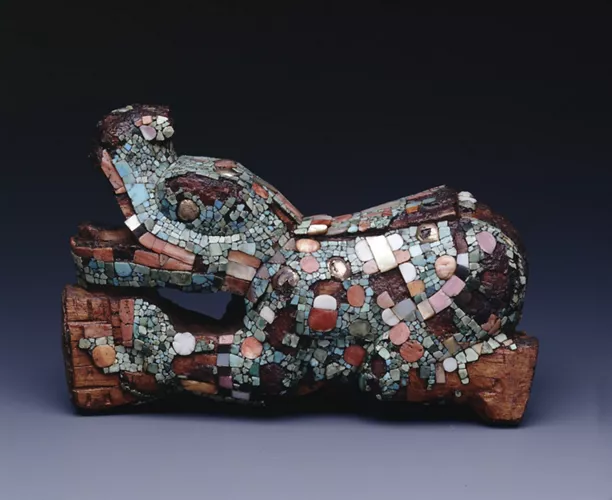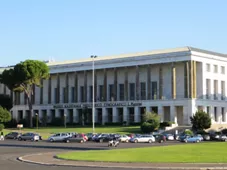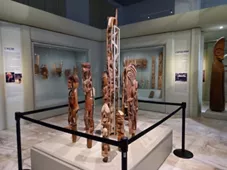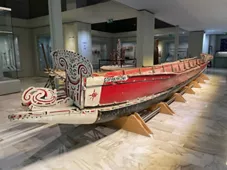This content was automatically translated. View the original text.




Overview
A complex plan of reform and reorganization of the structures of the Ministry for Cultural Heritage and Activities was born in Rome in 2016 the Museum of Civilizations.
Its establishment has made it possible to group four important national museums into a single body:
Prehistoric ethnographic museum "Luigi Pigorini"
Museum of Arts and Folk Traditions "Lamberto Loria"
Museum of Oriental Art "Giuseppe Tucci"
Museum of the High Middle Ages "Alessandra Vaccaro"
The birth of this place of culture will allow us to organize, enhance and promote in a unified and innovative way archaeological and ethnographic collections unique in Italy, involving an increasingly wide audience in those sectors of our heritage considered of exclusive interest to scholars and enthusiasts. At least until today.
Prehistoric ethnographic museum "Luigi Pigorini"
Among the most important museum institutions in the world in terms of non-European ethnographic collections – North America, South America, Oceania, Asia, Africa – and the one with the greatest value among Italian museums for prehistoric collections. It has a strategic role on the international scene, and actively participates and promotes wide-ranging cultural and political projects, and as in the same vocation of the city of Rome, is open to the policies of recognition of diversity.
The Museum was founded on March 14, 1876 by Luigi Pigorini (1842-1925) built at the end of the sixteenth century by the Society of Jesus in the center of Rome, in a wing of the Palazzo del Collegio Romano, current seat of the MiBAC. Since the seventeenth century the Jesuit College had hosted the collection of antiquities and various curiosities that Father Athanasius Kircher had put together over time. The new institution conceived by Luigi Pigorini was born around the nucleus of prehistoric and ethnographic objects of the dissolved Kircheriano Museum. The Museum was moved to its current location between 1962 and 1977, the Palazzo delle Scienze, built on the occasion of the Universal Exhibition of Rome in 1942 at the Eur. Here he has preserved his original arrangement of the installations in two sectors: one dedicated to Paletnology and one to non-European Ethnography, located on two separate floors. For Ethnography there are three rooms: The Americas, Oceania, Africa.
For the Americas section we have specimens that testify to the population of America and the first contact with Europeans, especially the Taíno idol, to which is added the historical development of ancient Mesoamerica, the cultural evolution that starts from the Olmecs (1700-300 BC) and up to touch the masterpieces of the art of the Aztecs (1300-1521 AD) that allow you to discover the daily life, the funeral rituals and the complex magical-religious world of that people. The route ends with the hall dedicated to Ancient Peru: 2500 years of history of the Andean peoples until the arrival of the Spanish colonizers.
In the Africa section, three stages mark the exhibition itinerary: the first encounters between Europe and Africa, the first African objects brought to Italy (XVI-XVII century) and the discovery of African art in the early twentieth century.
The path of Oceania is organized, instead, by thematic areas, from the "Houses of Men" of New Guinea, to the relations of man with the earth, to the social organization between sacredness and power.
As for the Pianus dedicated to Prehistory, the exhibition itinerary chronological succession from human manifestations of the Paleolithic age, show the hunting and gathering activities, and telling of the first communities that passed from the village to the city. Important testimony is the underwater excavation of Lake Bracciano with the great pirogue of 8000 years ago.
Location: Palazzo della Scienza Universale - Piazza Guglielmo Marconi, 14 - Rome
Museum of Arts and Folk Traditions "Lamberto Loria"
Theonly state museum in Italy with specific expertise in the field of demoethnoanthropological subjects, its purpose is the registration of the popular traditions of all Italian regions and for this reason it preserves over one hundred thousand documents, acquired since 1906 to date. The Museum was born from the Exhibition of Italian Ethnography that was held in 1911 in Rome to celebrate the 50th anniversary of the Unification of Italy, when Lamberto Loria (1855-1913), ethnologist, during a short stay in Sannio, and following numerous study expeditions to countries outside Europe, realized that even Italy of the early 1900s would have to focus on ethnographic research and for this reason he proposed to open an institution that would collect all the documentation of that agro-pastoral world that at that time was strongly transforming, after centuries of immobility, due to the rapid industrialization of nearby and distant areas and the consequent emigration, almost massive, from rural centers.
All the documentary material of the Museum is currently accessible to the public through numerous services: the library, the historical archive, which houses acquisitions, the printing cabinet, the photographic archive, the sound archive, the archive of visual anthropology, the ethnographic deposits, the inventory office cataloging and loans, the restoration laboratory and the audiovisual laboratory. The Museum, in fact, for its specificity and uniqueness throughout the Peninsula, is also a data collection, research and documentation center.
Venue: Palazzo delle Arti e Tradizioni Popolare - Piazza Guglielmo Marconi, 8/10 - Rome
Museum of Oriental Art "Giuseppe Tucci"
It preserves the finds collected between 1928 and 1954 from the excavations of the Italian archaeological missions in Iran, Pakistan and Afghanistan, as well as the objects purchased in Nepal and Tibet by Giuseppe Tucci, one of the greatest orientalists of the twentieth century, and has been further enriched over the years thanks to purchases made by the State from private individuals, donations from private individuals and entities, as well as exchanges with various Asian states.
The Museum was established in 1957 by Presidential Decree, and was opened to the public in 1958. On 31 May 2005 the Museum was named after Giuseppe Tucci (1894-1984), who was also one of the promoters of the institution.
The Museum carries out tasks of protection of artistic and archaeological objects from Asian countries at the national level, providing, cooperating with the Territorial Superintendencies, to control the customs transit of cultural goods, to avoid the dispersion of public and private collections, providing advice to public institutions in the matters of its competence, and promoting the knowledge of Asian cultures to the general public with exhibitions, conferences, guided tours of its collections.
Over the years the structures of the Museum have been modified to allow the development of its activities: a specialized Library, a Restoration Laboratory, a Photographic Archive, an Archive of Oriental collections in Italy, a Bioarchaeology and Electron Microscopy Service, an Educational Service.
The museum is transferred to the EUR in the Science Palace of the Museum of Civilizations.
Location: Palazzo della Scienza Universale - Piazza Guglielmo Marconi, 14 - Rome
Museum of the High Middle Ages "Alessandra Vaccaro"
Housed in the Palazzo delle Scienze at Eur with the aim of equipping Rome with an archaeological museum of the postclassical age and to promote research on a fundamental period for the study and understanding of the changes that marked the ancient world, the Museum was inaugurated in 1967 and exhibits materials dating between the fourth and fourteenth centuries, mostly from Rome and central Italy.
Three imperial portraits date back to late antique Rome (IV-VI century), some votive and funerary epigraphs and a precious gold crossbow fibula with perforated decoration. Following are the finds of the Lombard occupation in Umbria and the Marches (VI-VII century) with the two necropolises of greater value in central Italy (Nocera Umbra and Castel Trosino), which, with their kits of weapons, jewelry, ivories, glass and bronze and ceramic pottery, constitute the core of excellence. The following Carolingian age is illustrated by a conspicuous group of marble reliefs belonging to the architectural decoration of the churches of Rome and Lazio, which underwent great renovations at the time of the "Carolingian Renaissance" (IX-X century). At the same time belong the furnishings and objects of use taken from two farms of papal foundation, the domuscultae of S.Cornelia and S.Rufina, created in the Roman Campaign to ensure the supply of the city (late VIII-X century) and continue to exist with other functions until the full Middle Ages. The journey ends with the “Coptic” collection consisting of reliefs and fabrics that offer a significant expression of the artistic production of late antique and early medieval Egypt (V-X century).
In the Museum is also exhibited the wonderful decoration in opus sectile (inlaid with colored marble) that adorned the performance hall of a monumental domus, in Ostia, outside Porta Marina .
Location: Palazzo della Scienza Universale - Viale Lincoln, 3 - Rome